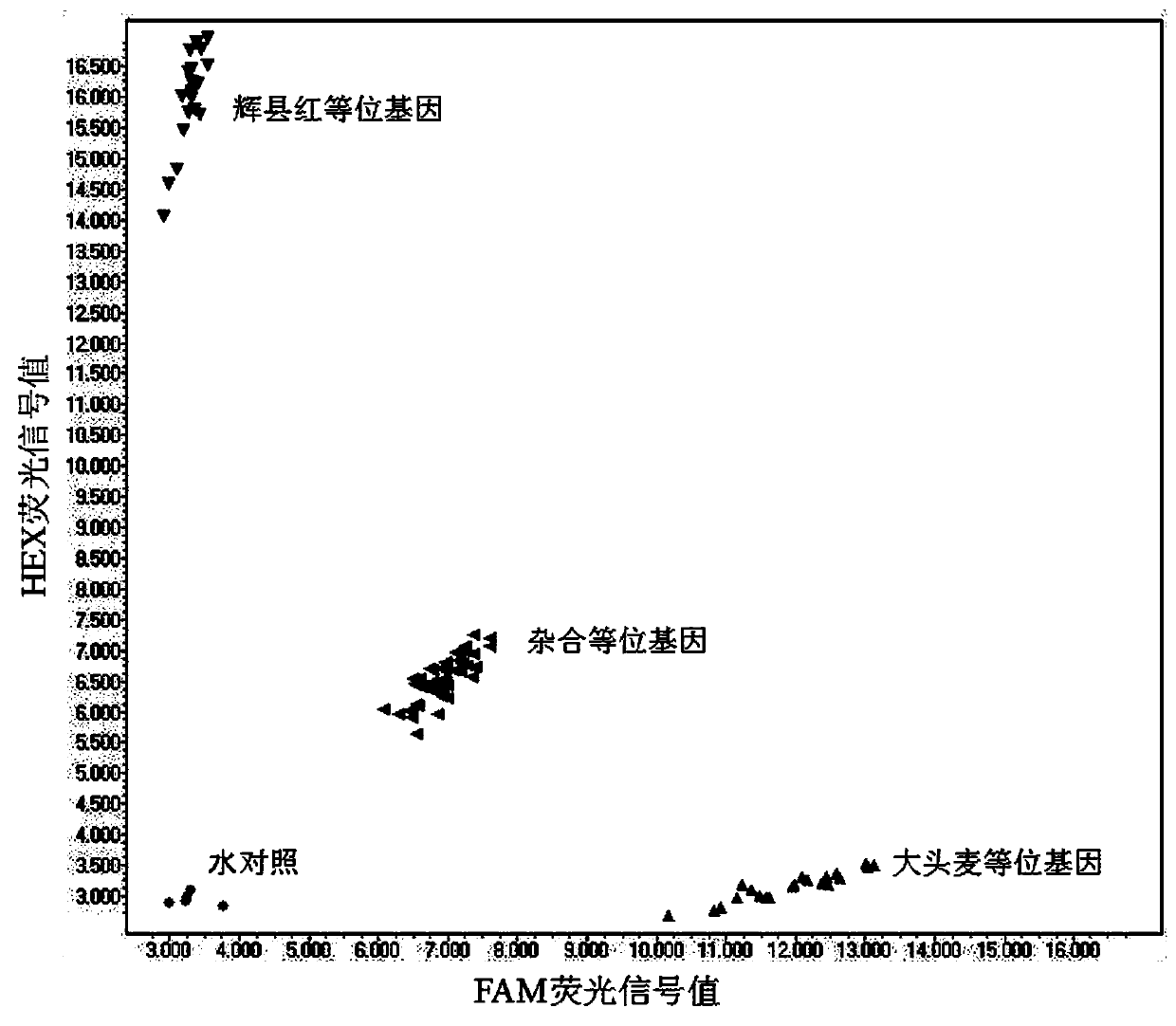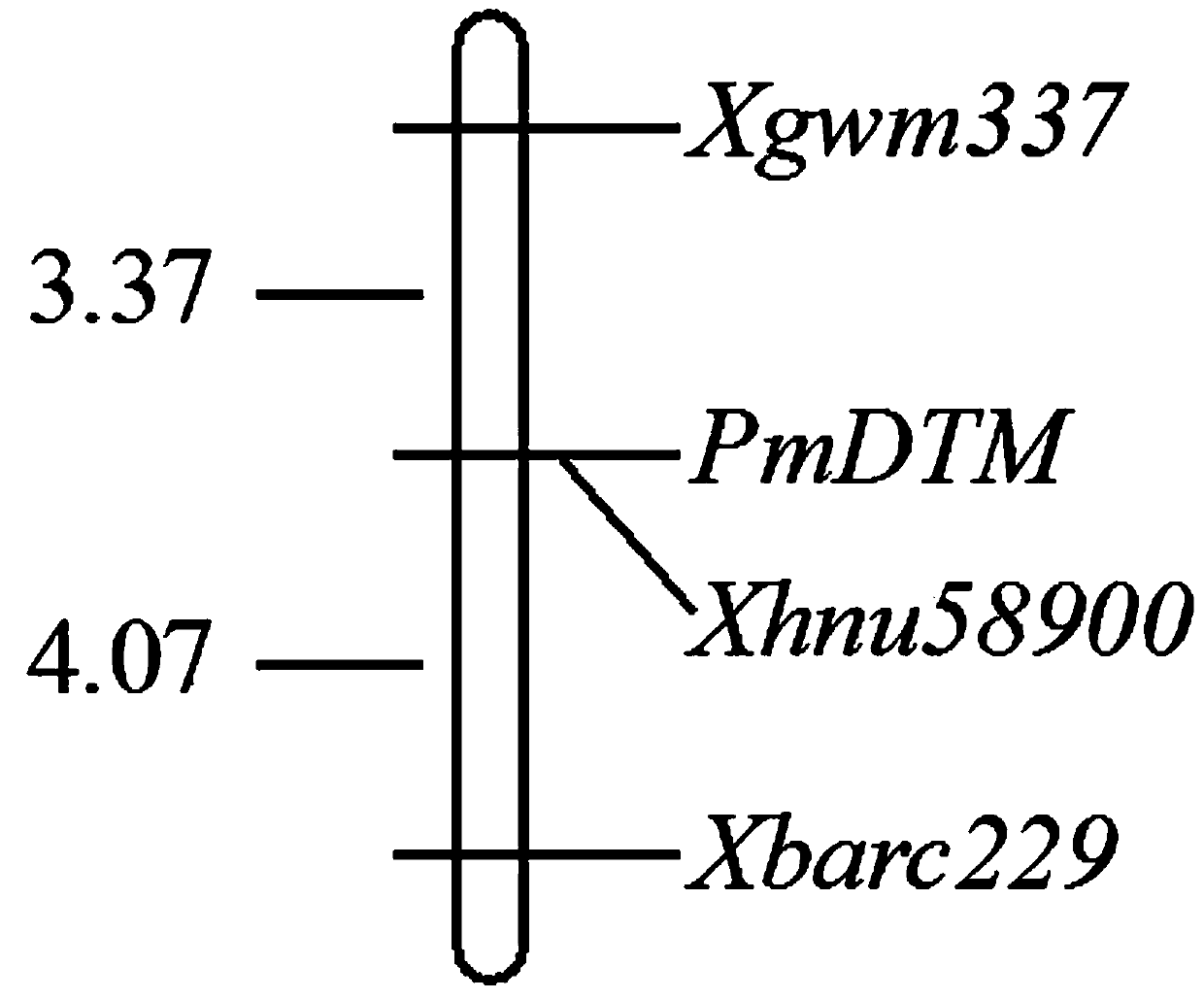KASP marker for wheat powdery mildew resistance gene PmDTM and application of KASP marker
A powdery mildew resistance gene and powdery mildew resistance technology, which is applied in the field of KASP marker of wheat powdery mildew resistance gene PmDTM, can solve the problems of large import section and linkage burden, achieve convenient detection, stable amplification, and reduce breeding costs Effect
- Summary
- Abstract
- Description
- Claims
- Application Information
AI Technical Summary
Problems solved by technology
Method used
Image
Examples
Embodiment 1
[0042] Example 1 Wheat Powdery Mildew Resistance Gene PmDTM Acquisition of co-segregated molecular markers
[0043] (1) (Big head wheat × Huixian red) F 2 group building and PmDTM Screening for segmental recombinants
[0044] (1) The powdery mildew-resistant parent, barley (♀), was crossed with the powdery mildew-susceptible parent, Huixianhong (♂), to obtain the hybrid F 1 , F 1 Selfing produced F containing 1,192 individuals 2 group;
[0045] (2) Extract F by SDS method 2 The DNA of each individual plant in the population; using PmDTM The boundary markers GWM337 and BARC229 (http: / / wheat.pw.usda.gov / GG2 / index.shtml) from F 2 173 individuals recombined in this segment were screened out in the population.
[0046] (2) 173 F 2 Identification of Powdery Mildew Resistance in Selfed Progenies of Generational Recombinants
[0047] Powdery mildew resistance identification was carried out in the plant growth box, from each F 2 Randomly select 25 seeds from the self-crosse...
Embodiment 2
[0057] Example 2 Wheat Powdery Mildew Resistance Gene PmDTM Application of co-segregated molecular markers
[0058] Identification of resistance to powdery mildew was carried out on a core population of wheat containing 428 accessions. The identification was carried out in a plant growth chamber, and the identification method was the same as in Example 1. Genomic DNA of 428 materials was extracted by SDS method, and PCR amplification was performed with HNU58900. The amplification method of KASP marker is the same as that in Example 1. Use LightCycler 480 software v1.5.1.62 software to analyze the fluorescence signal value of the amplified product, and record the results.
[0059] The results showed that among the 428 wheat core germplasm materials, only 2 materials carried the same powdery mildew resistance allele as that of barley, and both materials showed broad-spectrum resistance to powdery mildew. This shows that the KASP marker HNU58900 provided by the present invent...
PUM
 Login to View More
Login to View More Abstract
Description
Claims
Application Information
 Login to View More
Login to View More - R&D
- Intellectual Property
- Life Sciences
- Materials
- Tech Scout
- Unparalleled Data Quality
- Higher Quality Content
- 60% Fewer Hallucinations
Browse by: Latest US Patents, China's latest patents, Technical Efficacy Thesaurus, Application Domain, Technology Topic, Popular Technical Reports.
© 2025 PatSnap. All rights reserved.Legal|Privacy policy|Modern Slavery Act Transparency Statement|Sitemap|About US| Contact US: help@patsnap.com



